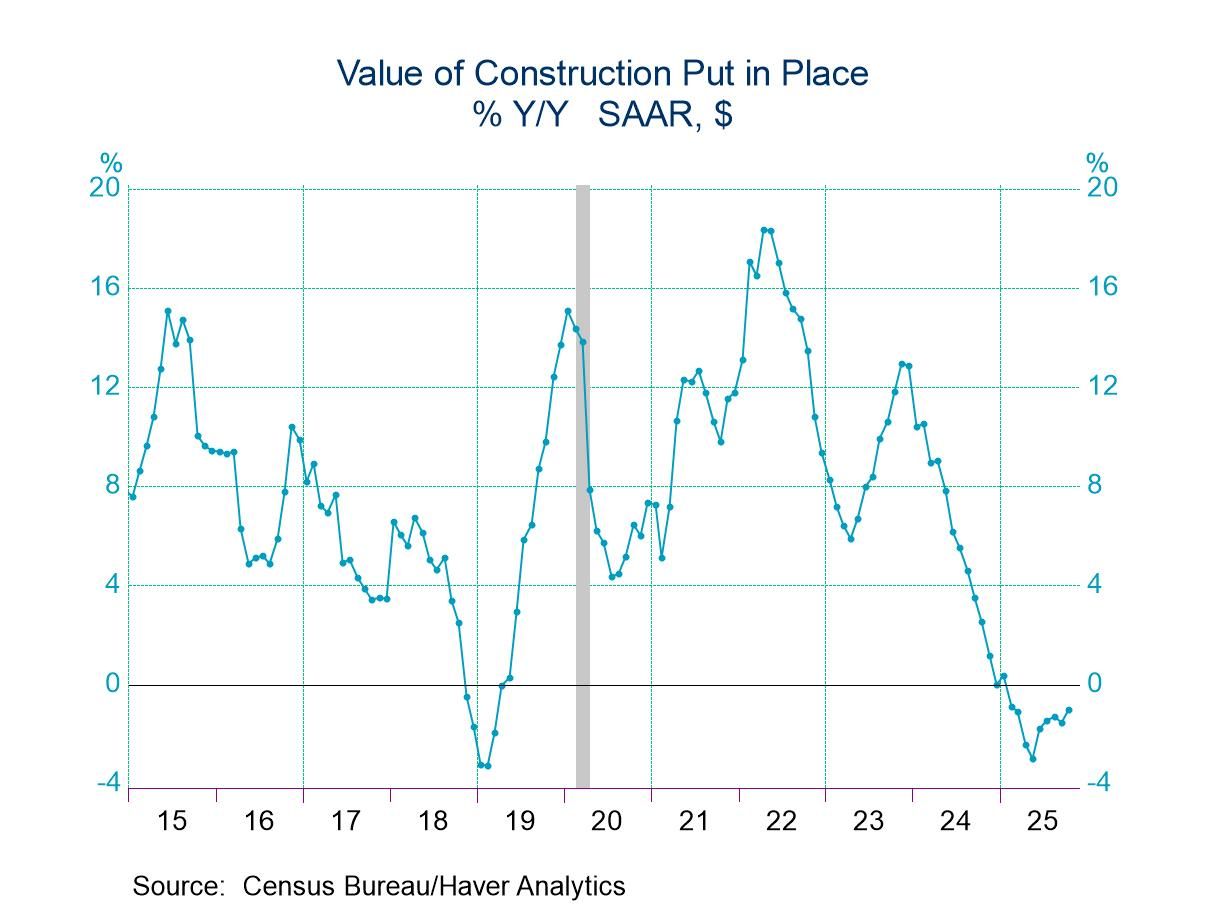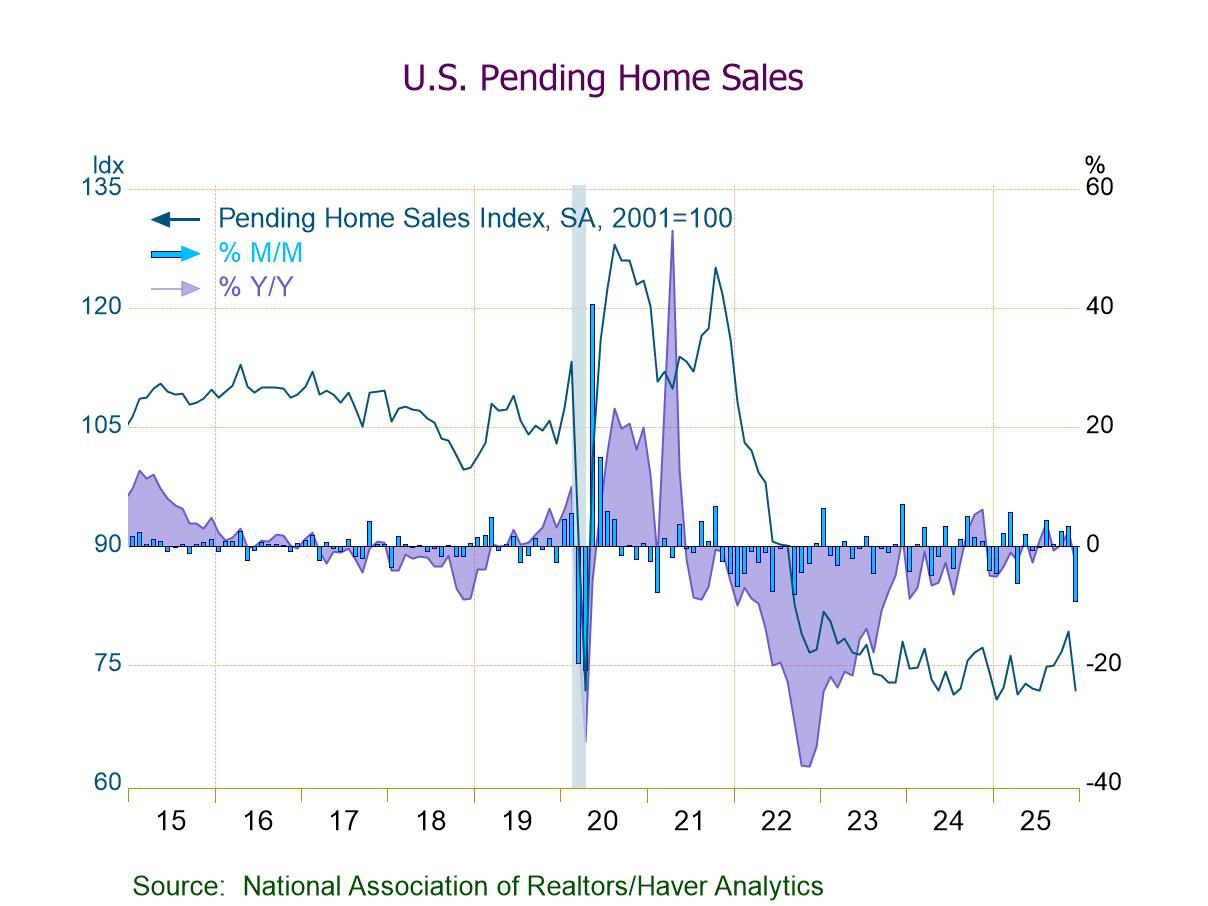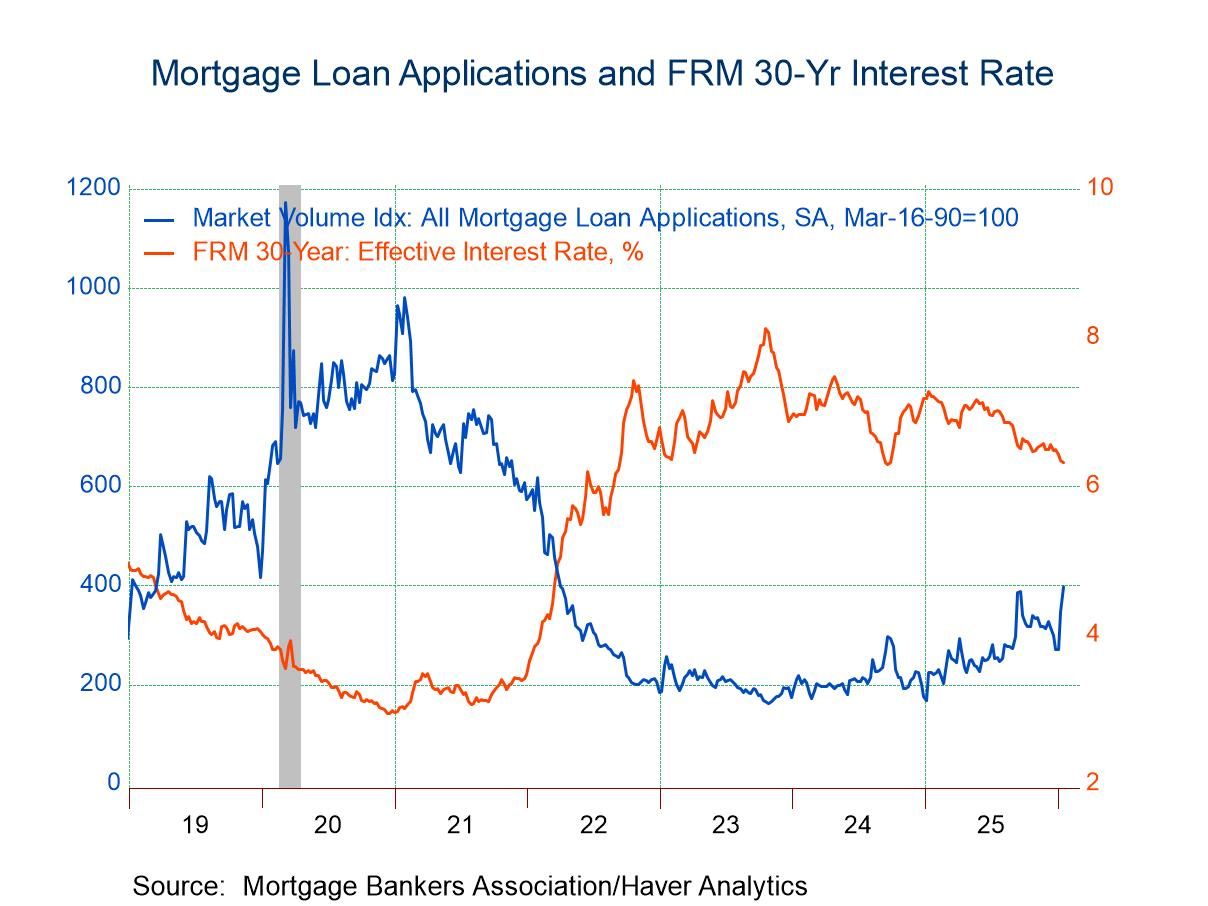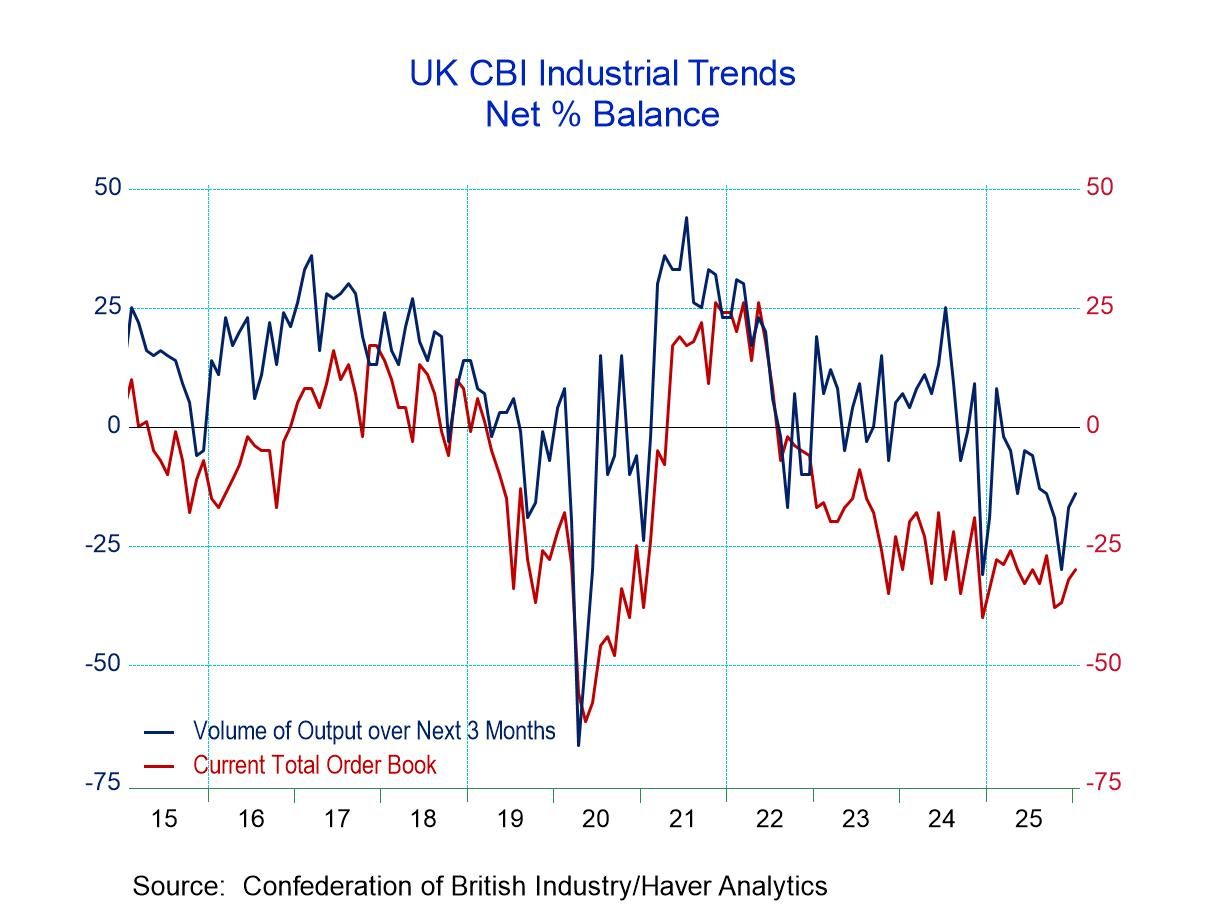U.S. Trade Deficit Widens to $62.20 Billion in December
Summary
- Deficit widens as expected in December following November narrowing.
- Services trade surplus in Dec. matches the record high of Jan. ’18.
- Exports rebound following two straight m/m declines, while imports up for the third month in four.
- Real goods trade deficit narrows to $82.76 billion, the smallest since March ’23.
- Goods trade deficits w/ China and EU widen, while trade shortfall w/ Japan narrows to a four-month low.


The U.S. trade deficit in goods and services (BOP basis) widened to $62.20 billion in December from $61.88 billion in November ($63.21 billion originally), according to the U.S. Census Bureau. This was the third month in four in which the deficit had widened. The latest deficit matched the forecast in the Action Economics Forecast Survey and smaller than the $71.39 billion in December 2022. Exports rose 1.5% m/m (3.2% y/y) in December, the first monthly rise since September, after a 1.6% decline in November (-1.9% originally). Imports grew 1.3% (-0.4% y/y), the third m/m increase in four months, following an unrevised 1.9% November drop. For 2023, the goods and services deficit fell $177.76 billion or 18.7%, to $773.43 billion, from a record $951.19 billion in 2022; exports rose $35.04 billion or 1.2%, to $3053.49 billion, while imports fell $142.72 billion or 3.6%, to $3826.92 billion.
The deficit in goods trade (BOP basis) rose to $89.08 billion in December after narrowing to $88.39 billion in November, but it was smaller than the $91.90 billion in December 2022. Goods exports grew 1.8% (0.9% y/y) in December, the first m/m gain in three months, after a 2.9% decrease in November. Imports of goods increased 1.5% (-0.5% y/y), up for the third month in four, after a 2.3% November drop. The services trade surplus rose to $26.87 billion in December, matching the record high in January 2018, from $26.50 billion in November; it was $20.52 billion in December 2022. Services exports rose 1.0% (7.8% y/y) in December, the fifth consecutive m/m rise, after a 1.2% gain in November. Services imports increased 0.8% (-0.1% y/y) following no change in November and two successive m/m rises.
The real (inflation-adjusted) goods trade deficit (customs value; chained 2017 dollars) narrowed to $82.76 billion in December, the smallest since March 2023, from $83.94 billion in November; it was smaller than the $84.06 billion in December 2022. Real exports of goods rebounded 3.7% (3.1% y/y) in December, the first m/m increase since September, following a 2.1% decline in November. Real imports of goods grew 1.8% (1.3% y/y), the third m/m gain in four months, after a 2.5% November drop. A widening trade balance (net exports) has added 0.43%-points to GDP growth in Q4 2023 after adding 0.03%-points in Q3 2023.
The customs value goods trade deficit fell to a three-month-low $87.89 billion in December from $88.32 billion in November; it was smaller than the $91.08 billion in December 2022. The latest figure was smaller than an $88.46 billion deficit in the advance report released on January 25. Custom value exports rebounded 2.5% (1.2% y/y) in December, the first m/m gain since September, after a 3.0% decline in November, reflecting m/m increases of 5.5% (-1.9% y/y) in industrial supplies & materials, 5.0% (-2.4% y/y) in foods, feeds & beverages, 3.5% (6.5% y/y) in nonfood consumer goods excluding autos, and 2.9% (10.7% y/y) in other goods. To the downside, exports for automotive vehicles, parts & engines slid 3.3% (-4.4% y/y), the fourth m/m slide in five months; exports for capital goods excluding autos fell 0.4% (+4.5% y/y), the first m/m fall since May 2023.
Customs value imports grew 1.5% (-0.5% y/y) in December, the third m/m increase in four months, following a 2.3% drop in November, reflecting m/m rebounds of 5.5% (-1.2% y/y) in nonfood consumer goods excluding autos, 2.2% (-7.1% y/y) in industrial supplies & materials, and 1.0% (5.8% y/y) in other goods. In contrast, goods imports for automotive vehicles, parts & engines (-1.0%; +10.2% y/y), capital goods excluding autos (-0.6%; -0.2% y/y), and foods, feeds & beverages (-0.4%; -0.9% y/y) fell m/m in December. Meanwhile, petroleum imports rose 0.7% (0.4% y/y) in December, the fifth m/m rise in six months, following a 3.8% rebound in November. Nonpetroleum imports grew 1.5% (-0.5% y/y), the third m/m gain in four months, after a 2.8% November drop.
The 1.0% December rise (7.8% y/y) in services exports was led by increases of 2.3% (22.1% y/y) in travel services and 2.1% (8.9% y/y) in transport services, while construction services exports slid 3.1% (-46.6% y/y), the fourth consecutive m/m slide and exports of maintenance & repair services fell 0.4% (+24.7% y/y), the second successive m/m fall. The December 0.8% increase (-0.1% y/y) in services imports reflected rebounds of 5.1% (-3.4% y/y) in transport services and 3.3% (6.9% y/y) in maintenance & repair services; however, travel services imports fell 1.1% (+15.3% y/y), the first m/m fall since August and services imports for the use of intellectual property eased 0.2% (-11.1% y/y), the sixth straight m/m decline.
The U.S. goods trade deficit with China widened to a seasonally adjusted $22.85 billion in December after narrowing to $21.36 billion in November. Exports fell 5.7% (-12.0% y/y) in December on top of a 13.1% November fall, while imports rose 2.4% (-4.6% y/y) following an 11.6% November drop. The goods trade deficit with the European Union widened to $17.65 billion in December after narrowing to $15.58 billion in November, with exports advancing 6.3% (6.5% y/y) and imports rebounding 8.6% (1.9% y/y). The trade shortfall with Japan narrowed to $5.20 billion in December, the smallest since August, after widening to $7.04 billion in the previous month, reflecting declines of 1.4% (-2.7% y/y) in exports and 14.5% (-12.5% y/y) in imports. The trade deficit with China remained the largest among the three trading partners.
The international trade data, including relevant data on oil prices, can be found in Haver's USECON database. Detailed figures on international trade are available in the USINT database. The expectations figures are from the Action Economics Forecast Survey in AS1REPNA.


Winnie Tapasanun
AuthorMore in Author Profile »Winnie Tapasanun has been working for Haver Analytics since 2013. She has 20+ years of working in the financial services industry. As Vice President and Economic Analyst at Globicus International, Inc., a New York-based company specializing in macroeconomics and financial markets, Winnie oversaw the company’s business operations, managed financial and economic data, and wrote daily reports on macroeconomics and financial markets. Prior to working at Globicus, she was Investment Promotion Officer at the New York Office of the Thailand Board of Investment (BOI) where she wrote monthly reports on the U.S. economic outlook, wrote reports on the outlook of key U.S. industries, and assisted investors on doing business and investment in Thailand. Prior to joining the BOI, she was Adjunct Professor teaching International Political Economy/International Relations at the City College of New York. Prior to her teaching experience at the CCNY, Winnie successfully completed internships at the United Nations. Winnie holds an MA Degree from Long Island University, New York. She also did graduate studies at Columbia University in the City of New York and doctoral requirements at the Graduate Center of the City University of New York. Her areas of specialization are international political economy, macroeconomics, financial markets, political economy, international relations, and business development/business strategy. Her regional specialization includes, but not limited to, Southeast Asia and East Asia. Winnie is bilingual in English and Thai with competency in French. She loves to travel (~30 countries) to better understand each country’s unique economy, fascinating culture and people as well as the global economy as a whole.






